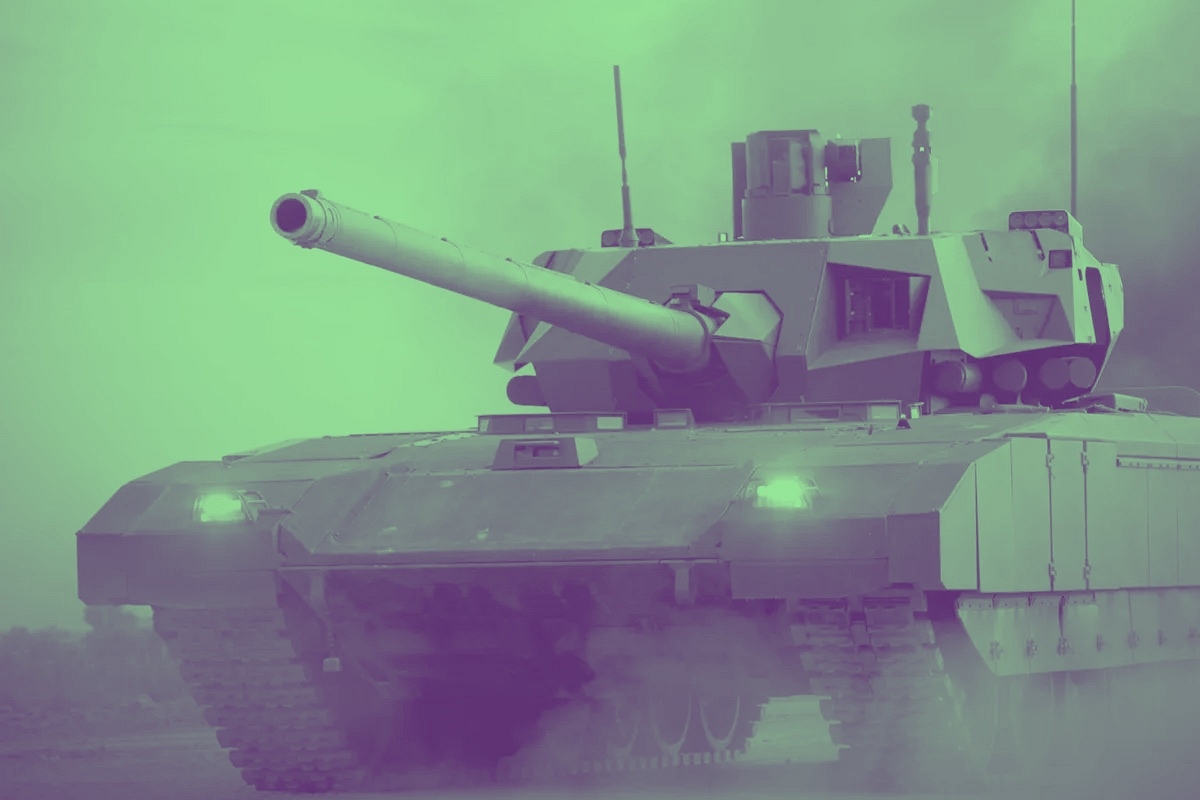Defence
After Killing Arjun, Army Sets Up Next-Generation Tank Project For Failure

File photo of Russian T-14 Armata tank.
After the Arjun tank program, it appears that the Indian Army is now trying to kill its future next-generation tank program.
The new tank, referred to by the army as the Future Ready Combat Vehicle (FRCV), aims to replace around 2,500 four-decade-old Soviet-origin T-72 tanks first acquired in 1982.
In addition to the T-72 tanks and their upgraded variants — the T-72 Combat Improved Ajeya (CIA) Mk-1 and Mk-2 — the Army operates more than 1,200 T-90 tanks, bought from Russia in various batches, and 124 Made-in-India Arjun Mk-1 tanks, with an additional 118 upgraded Arjun Mk-1A tanks on order.
The army is also looking to buy another 350 Zorawar light tanks, weighing close to 25 tonnes, for use in the mountains of Ladakh and North-Sikkim, against China.
The FRCV, the army hopes will be its tank of the future that will incorporate technologies that will keep it relevant for the next 35-40 years. They also anticipate the FRCV will have upgrade potential to adapt to the ever-changing battlefield
However, just like the Arjun, which underwent intense scrutiny and apathy before receiving orders for a mere 124 Arjun Mk-1 and an additional 118 upgraded Arjun Mk-1A (deliveries of which are likely to get delayed due to its diesel engine going out of production), the army seems poised to repeat the same mistakes with the FRCV.
The new qualitative requirements (QRs) drafted by the army for the FRCV are unreasonable and follow its penchent of setting marvel-comics-like QRs.
The last time the army drafted such QRs was in 2011 for the Multi-Caliber Assault Rifles (MCAR) to replace the INSAS rifles, and that project failed spectacularly. The army hoped its soldiers would be able to change the caliber of these rifles from 5.56 mm to 7.62 mm and vice-versa by simply changing the barrels, a requirement no international vendor could meet.
It has been 13 years since that ill-fated proposal, and only late last year did the new rifle, the Russian AK-203, begin induction.
An example of the unreasonable QRs is that the new tank should weigh 55 tonnes +/- 5 percent, with a crew of four, while simultaneously having frontal armor of 800mm RHA and a minimum of 600 mm RHA on all sides with blow-off panels.
No current tanks in the world with four crew members, whether American Abrams, German Leopard 2, or British Challenger, meet this requirement.
All of these tanks, which have undergone multiple iterations of improvements over the last decade, weigh nearly 60 tonnes or more.
Moreover, the army wants the tank to have provisions for all three — an autoloader, semi-automatic, and even manual loading for shells and missiles. Typically, the fourth crew member does the loading of shells and missiles if the tank does not have an autoloader.
Requirement of fourth crew member and all three ways of loading suggest that the army is unable to make up its mind, about what it wants.
Additionally, the army desires all the bells and whistles, including an active-protection system (APS) with 360° and top-attack protection against missiles, drones, and loitering munitions, jamming and electronic warfare solutions for soft-killing suicide drones, new-generation computers and electronics, the ability to control unmanned ground vehicles (UGV), and conduct manned-unmanned teaming (MUM-T) operations, all while having sufficient growth potential so that new technologies can be incorporated onto the tank as they emerge.
And all this for a modest price tag of $4 million apiece, amounting close to Rs 57,000 crores ($7.1 billion) for 1,770 tanks. Only one tank — the Korean K-2 Black Panther — comes close to this, but it costs a neat $8.5 million each and is operated by three crew members.
This budgeting harakiri could lead to the delays and potentially even cancellation of the project forcing imports in limited quantities at prohibitive costs, reminiscent of budgeting of just $10 billion dollars (in 2007) for 126 Medium Multi-role Combat Aircraft (MMRCA).
This budget estimation was so off the mark that when the time came to order, the government cancelled the project and imported just 36 Rafales in 2016 from France at a cost of $8.7 billion — a per-unit cost of close to $240 million.
Support Swarajya's 50 Ground Reports Project & Sponsor A Story
Every general election Swarajya does a 50 ground reports project.
Aimed only at serious readers and those who appreciate the nuances of political undercurrents, the project provides a sense of India's electoral landscape. As you know, these reports are produced after considerable investment of travel, time and effort on the ground.
This time too we've kicked off the project in style and have covered over 30 constituencies already. If you're someone who appreciates such work and have enjoyed our coverage please consider sponsoring a ground report for just Rs 2999 to Rs 19,999 - it goes a long way in helping us produce more quality reportage.
You can also back this project by becoming a subscriber for as little as Rs 999 - so do click on this links and choose a plan that suits you and back us.
Click below to contribute.
Latest